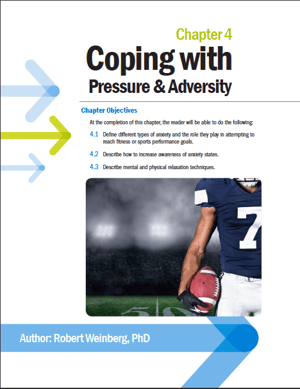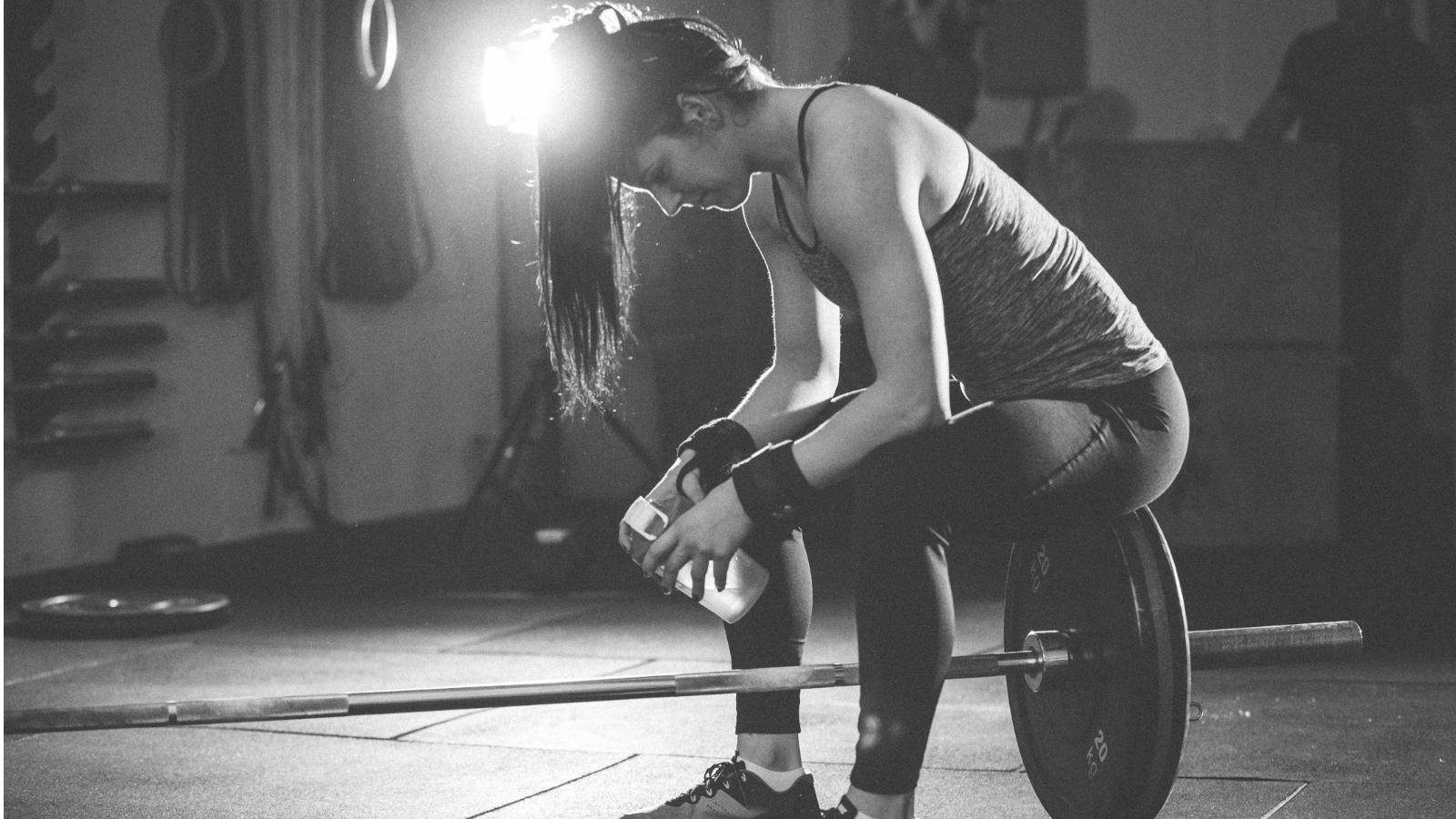One of the big things that separate high-performance athletes from the rest of us is their ability to cope with the anxieties of competition on a regular basis. But the secret to their success isn't a secret!
The same skills and abilities that allow athletes to cope under pressure can help people of any fitness level perform better on the playing field, in the gym, and even in everyday life. By applying the lessons from this chapter of NASM's Mental

Toughness course, readers will be able to define the different types of anxieties that surround fitness and sports performance goals. They'll also be able to describe how to increase their awareness of those anxiety states and use mental and physical relaxation techniques to overcome them.
Let’s expand upon these principles and first look at how exercise can minimize anxiety in general.
Defining and Being Aware of The Different Types of Anxiety
As personal trainers, there are generally 2 components of anxiety we can identify in clients:
- Cognitive anxiety - This is the mental component that dwells in thoughts, apprehension, nervousness, dread, ruminations, and consistent worry. 2.
- Somatic anxiety - The physical aspect of anxiety. This has to do with the physiological effects of anxiety through increased breathing, sweating, muscle tensions, and more.
It is important to first know what to look for and seek the signs for each state of anxiety in your clients.
Only if you are working hard at identifying anxiety can you design a program to effectively minimize both the cognitive and somatic components of the disorder.
During these stressful times brought upon us by the COVID-19 pandemic, you can expect that many clients are exhibiting many forms of anxiety - perhaps for the first time in their lives. Being equipped with the know-how and vigilance to spot anxiety is a great tool to utilize to reassure your clients.
Exercise as a Way to Cope with Anxiety
It’s no secret that exercise can do wonders for reducing anxiety. In addition to the resiliency and stress relief benefits, it also has the added mental benefits of calming the mind. A study in 2003 showed that a consistent workout routine positively correlated with a decrease in anxiety disorders (Goodwin 2003).
Another study showed that after a period of 10-20 weeks, participants who had anxiety disorders showed an increase in energy and a reduction in the overall manifestations of their anxiety (O’Connor & Puetz 2005).
But it should be stated that there is not enough conclusive evidence out there to suggest that exercise exactly correlates with positive results in clients who have anxiety disorders.
Knowing your client and listening to their feedback should be the largest factor when designing programs for your clients. When it comes to reducing anxiety and improving mental resilience, exercise can certainly benefit. But not every client will react the same.
See also: How to Overcome Gym Anxiety
Relaxation Techniques: Breath Control & Progressive Relaxation
There are a number of well-known techniques for relaxing yourself and coping with anxiety. One of the most prominent practices is breath control.
Breath Control
Breath control can not only be utilized yourself but can also be taught to your clients.
To practice breath control -
- Fill the lower area of your lungs by pushing the diaphragm down.
- Fill the middle area of your lungs, expand the chest, and raise the rib cage.
- Fill the upper area of your lungs through a slightly raised chest and shoulders.
- Hold for a few seconds and exhale, reversing the steps and returning to the initial state.
Practice this regularly, but don’t get too worried about perfecting it right away. Even a less-than-perfect practice of breath control can still bring a lot of benefits. Slowing down breathing, after all, can slow down anxious thoughts.
Progressive Relaxation
Another key technique is in progressive relaxation, which involves tensing and relaxing isolated muscles in a way that progresses through various targeted muscle groups.
This wellness technique is particularly powerful because clients can learn how to relax tense muscles. Through the distinction between muscle tension and relaxation, clients can gain much more muscle control. Somatic anxiety will lessen as well, given that a relaxed body more readily leads to a relaxed state of mind.
Stay Calm and Mentally Tough During the COVID-19 Disruptions
These skills and concepts will help you and your clients navigate the anxieties that come along with social distancing and the everyday disruptions from Covid-19.
Download the Coping with Pressure & Adversity chapter from our Mental Toughness course and learn how to help your clients.
Want to learn more about training the mental side of a client? Take our Mental Toughness course and learn critical aspects of psychological strength for fitness and sport. Mental toughness helps to provide greater awareness and effectiveness in getting performance results by keeping the mind engaged, responsive, resilient, and strong under pressure.
These skills will help you and your clients be able to navigate the anxieties that come along with social distancing and the everyday disruptions from Covid-19.
Download the Coping with Pressure & Adversity chapter from our Mental Toughness course and learn how to help your clients.

















